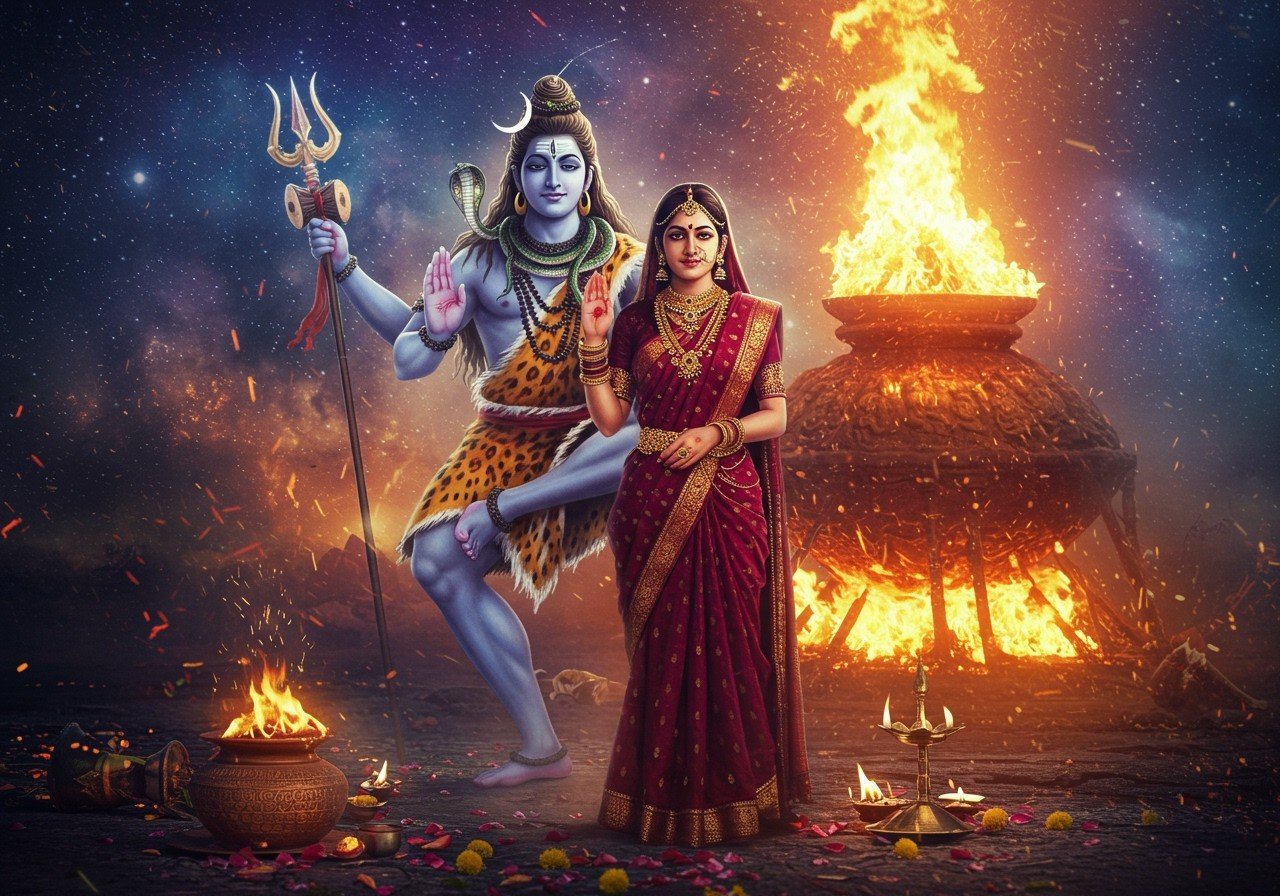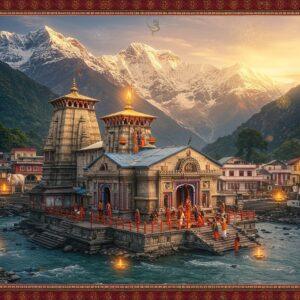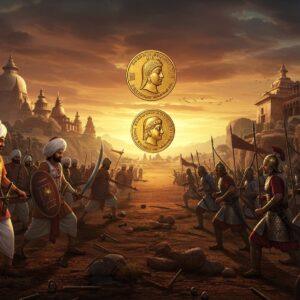
Set against the backdrop of culturally vibrant India, the narrative of Daksha, a significant figure in Hindu mythology, is coming to the silver screen. This cinematic venture seeks to intertwine ancient lore with modern filmmaking, bridging the gap between time-honored traditions and contemporary storytelling. The buzz surrounding its portrayal of Daksha’s story and its potential impact on Indian cinema is palpable.
Daksha: The Progenitor and His Significance
Daksha holds a revered position as a Prajapati, a progenitor of creation, in Hindu mythology. He is intrinsically linked to the momentous Daksha Yagna, a sacrificial ritual laden with profound symbolic meaning. This narrative delves into Daksha’s multifaceted character, exploring his virtues and the notable conflicts, particularly his complex relationship with Lord Shiva. His daughter, Sati, plays a crucial role in this intricate narrative, adding layers of familial devotion and tragic consequences. Explore our Dashakarma kits for your puja needs.
From Ancient Tales to the Silver Screen
The upcoming film promises a faithful portrayal of these age-old tales, breathing new life into Daksha’s story for a modern audience. It aims to capture the essence of traditional narratives while presenting them through the dynamic lens of cinema. By showcasing the intricate relationships between Daksha, Sati, and Lord Shiva, the film aspires to bridge the gap between ancient myths and contemporary storytelling. Find exquisite idols of deities at Poojn.in.
A Cinematic Interpretation of Daksha’s Story
This cinematic adaptation employs creative liberties to bring Daksha’s story to life for today’s viewers. Utilizing visual storytelling techniques like CGI and meticulously crafted set designs, it creates an immersive experience that transports the audience to a bygone era. This approach endeavors to preserve the core essence of the original narrative while making it engaging and visually captivating for modern sensibilities. Bring home the blessings of Laddu Gopal with our beautifully crafted idols.
The director’s vision focuses on seamlessly merging historical accuracy with artistic interpretation, aiming to resonate with both those well-versed in the mythology and those encountering it for the first time. The screenplay artfully balances traditional elements with contemporary narrative techniques, making the story accessible and profoundly meaningful.
Cultural Significance and Resonance
This film holds deep cultural significance for Indian audiences, particularly those who cherish tradition and seek to connect with their roots. For middle to upper-middle-class Indians, who deeply value their heritage, the film offers a reflection of their cultural identity. It appeals to those who appreciate authentic narratives and find resonance in stories that have been passed down through generations.
Adorn yourself with sacred jewellery from Poojn.in.
The film’s dedication to authenticity aligns with the audience’s preference for genuine portrayals. It serves as a powerful reminder of the rich tapestry of mythology that is integral to Indian culture. There’s a palpable sense of anticipation among viewers eager to witness how these timeless stories are reimagined for the modern cinematic landscape.
A Look at the Cinematic Experience
As the film reaches audiences, its critical reception will undoubtedly be a focal point. The performances of the lead actors, tasked with embodying these mythological figures, will be crucial in shaping the film’s impact. Their portrayal will directly influence how deeply the film resonates with viewers. Bring home the strength and blessings of Panchmukhi Hanuman.
The film’s overall success will hinge on various factors, including the narrative pacing, the director’s vision, and the musical score. Audience and critic reviews will offer insights into the film’s adherence to mythological accuracy and its cinematic merit. This feedback will ultimately shape how the film is perceived and its lasting impact.
Accessibility through OTT Platforms
In keeping with the evolving landscape of film consumption, the movie will be available on OTT platforms. This strategic decision reflects the growing trend of at-home viewing and ensures wider accessibility. The online release caters to tech-savvy audiences and those who value the convenience of watching films at their leisure. This approach aligns perfectly with the preferences of a significant segment of the target demographic. Invite prosperity with a Lord Kubera Murti from Poojn.in.
Poojn.in: Connecting You with Daksha’s Sacred Legacy
Poojn.in, India’s largest Dashakarma bhandar, offers a wide selection of authentic puja items and ritual materials that resonate with the profound story of Daksha depicted in the upcoming film. We provide:
- Complete Daksha puja samagri kits: These kits contain all the essential items you need for performing the puja, ensuring a smooth and sacred experience. Our kits are carefully curated by experts to include everything necessary for a traditional ceremony.
- Pure copper and brass havan kunds: These high-quality kunds are ideal for sacred fire ceremonies, adding an element of authenticity to your rituals. Crafted with precision and care, they are designed for durability and sanctity.
- Traditional dhoop and agarbatti: Made from natural ingredients, our dhoop and agarbatti create a serene and sacred atmosphere. We offer a variety of fragrances to enhance your spiritual experience.
- High-quality ghee: Pure and unadulterated ghee for ritual offerings, ensuring the purity of your ceremonies. Sourced from trusted suppliers, our ghee upholds the highest standards of quality.
- Sacred threads and mala beads: These items are essential for many pujas and rituals, symbolizing connection and devotion. Choose from a variety of materials and designs.
- Genuine rudraksha beads and malas: Known for their spiritual significance, our rudraksha beads and malas are authentic and carefully selected. We offer a range of sizes and combinations to suit your needs.
You can easily order these items through our website: www.poojn.in, by phone: 03369029784, or via WhatsApp: 9476142738. We offer quality assurance and pan-India delivery. Our expert team is always available to assist you in selecting the right items for your spiritual needs. We adhere to strict quality control measures to ensure the sanctity of all our ritual materials. Visit Poojn.in today to discover our extensive collection of authentic puja items, designed to facilitate your sacred traditions with convenience and trust.
Note: Product availability may vary. Please check our website for current stock and prices.
Final Thoughts
The upcoming film promises to captivate audiences with its unique fusion of tradition and modern cinematic techniques. By offering a respectful yet imaginative interpretation of Daksha’s story, the film aims to resonate with both the intellect and the emotions. It bridges the gap between ancient lore and the present day, inviting viewers on a journey of rediscovery. Whether experienced on the big screen or through the convenience of OTT platforms, this cinematic experience offers a profound connection to our cultural heritage, reminding us of the enduring power of these timeless narratives.
Frequently Asked Questions
What is the film about? The film delves into the rich tapestry of Indian mythology, focusing on the story of Daksha, a key figure in Hindu tradition. It seamlessly blends traditional storytelling with modern cinematic techniques.
Is there an OTT release? Yes, recognizing the changing preferences of viewers, the film will be accessible on various OTT platforms, allowing for convenient at-home viewing.
What makes the film unique? The film’s strength lies in its authentic depiction of mythology, complemented by captivating visuals and a compelling narrative that bridges the past and present. The filmmakers have strived to honor the original stories while making them accessible to a contemporary audience.
Dakshayagnam (1962 & 1934) and DAKSHA (2025) are other films focused on Daksha. Other upcoming mythological movies (potentially in 2025) include Ramayana, Kannappa, Kalki 2898 AD, Brahmastra Part Two: Dev, Hiranyakashyap, Adhira, and Maa.


